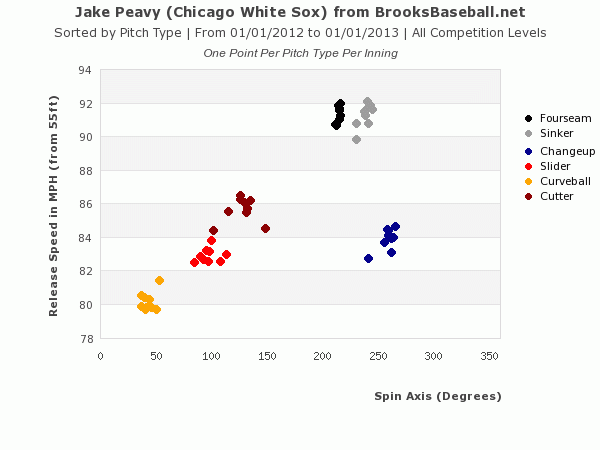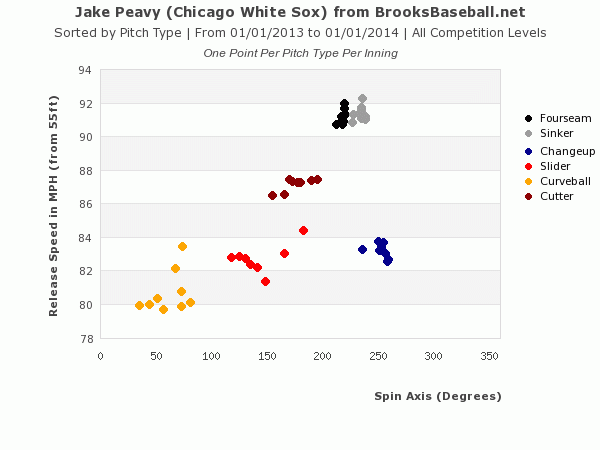If you’ve made it to Part III in the search to identify potential breakout pitchers, congratulations. If you missed them, you can find Part I here and Part II here.
Enough Talk, Where Is This List Of Potential Breakout Pitchers?
I’ve uploaded an Excel file to Microsoft Sky Drive. You can edit, view, or download the file for your own uses. It’s mostly the same data from the YouTube video, but I added a lot of bells and whistles. A red cell indicates a pitch that has declined in use from 2012 to 2013. A green cell indicates a pitch with more usage. The color intensity indicates the magnitude of the change. The links to the right take you directly to that specific player’s page on BrooksBaseball.net.

Disclaimer #1
Keep in mind, I started this analysis on June 24th, 2013. So if you’re finding this information after that time, you may want to double-check the usage graphs for any pitcher you’re researching. But I’ve tried to document the approach to doing this research in the video and other parts of this series. You can perform this research at any time (it would be great if we could get monthly usage reports from Fangraphs, then we could do this in the offseason to identify pitchers who started to change their mix late in the season).
Disclaimer #2
You saw from Part II of this series that these changes in mix have to be taken with a grain of salt. And even after you’ve verified that there is indeed a change in pitch mix, you still need to go review the effectiveness of the pitches being used more frequently. I wish I could go through each of these pitchers and break them down for you. But it’s just not practical (my two-year old and four-year old don’t find PITCH f/x research very entertaining). Hopefully I’ve equipped you with the tools you need to go analyze these pitchers more closely.
For pitchers on your team, check them out. If you’re thinking of picking up a free agent, check him out. If your pitching staff is terrible and you need to find the next big ace, check them all out.
Conclusion
Granted, it’s a small sample size. But I’ve done a deep look in this fashion for Edward Mujica, Max Scherzer, and Alexi Ogando. And all show promising results. There will certainly be pitchers that change their mix and it has little effect on their end results. But this seems like a promising exercise.
PLEASE LET ME KNOW WHAT YOU THINK Or If You Have Questions
I realize this is quite involved. It’s certainly more difficult than reading the weekly pickups columns that are out there. But anyone can read those and snag players just as easily as you can. This process will put you ahead of the curve, give you players to monitor, and give you first crack at picking them up.
Thanks and be smart.

